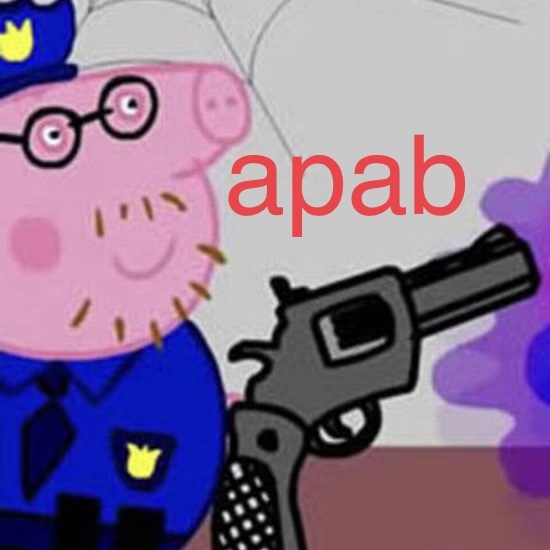This is a 46‐minute afterschool special that film historian Rich Brownstein recommended to me during a conversation. It is a reenactment of an actual classroom experiment from the 1960s which how, through subtle increments, authorities can slowly manipulate almost any ordinary adult into serving their agenda. Admittedly this reenactment is a bit cheesy at times (most obviously in how it looks like somebody held all of the students back a couple grades), but it has an important message to tell. The ending impressed me.
ETA: Just to clarify, while discipline and ultranationalism were important to Fascism, they were by no means the only factors leading to its atrocities, as the experiment misleadingly implied. While this experiment remains worth noting, its importance should not be overestimated either.
Click here for events that happened today (November 11).
1920: Walter Krupinski, Luftwaffe fighter ace, existed.
1923: The authorities arrested Adolf Schicklgruber in Munich for high treason for his rôle in the Beer Hall Putsch.
1926: Tōkyō named Captain Seishichi Yamaguchi as Tenryu’s commanding officer of.
1932: Joseph Goebbels noted in his diary that the NSDAP’s debts were piling up, and the presses for its publications were in danger of being stopped.
1935: AG Weser laid down the U‐27’s keel in Bremen, Germany.
1937: As Chinese troops at Shanxi abandoned Xinkou city and fell back toward Taiyuan, the Imperial Japanese army began to advance on Nanjing, China.
1938: Hungarian Regent Miklós Horthy toured territory newly gained from Czechoslovakia and Berlin issued four gunboats’ construction @ 6,000,000 Reichsmarks each.
1939: The funeral of Czech student Jan Opletal, whom somebody killed earlier during the Czech independence celebrations, turned into a demonstration that the Wehrmacht crushed; the authorities closed Czech universities, sent 1,200 students to camps, and sentenced nine to death. (Coincidentally, Adolf Schicklgruber attended the funeral of those killed in the staged assassination attempt of November 8 in München, Germany.)
1940: The Royal Navy launched the first all‐aircraft ship‐to‐ship naval attack in history during the Battle of Taranto. Meanwhile, the Axis armed merchant cruiser Atlantis stopped Allied ship Automedon with gunfire in the Bay of Bengal, massacring seven crew and one gunner, then captured eighty‐seven of its survivors and their cargo, including top secret Royal Navy documents detailing military deployment in Asia and code schemes which Atlantis soon sent to the Empire of Japan.
1941: Around the same time that Kaga entered the drydocks at Sasebo Naval Shipyard, Japan, and Admiral Mitsumi Shimizu held a briefing at Yokosuka for the Axis Sixth Fleet officers aboard Katori on the Pearl Harbor raid, ten Axis submarines departed from Yokosuka Naval Base for Kwajalein of the Marshall Islands, where they would proceed for US Territory of Hawaii. I‐68 joined the Advance Expeditionary Force for the assault on Pearl Harbor; she departed Saeki, Japan for Kwajalein, Marshall Islands. Meanwhile, Axis submarine U‐580 collided with target ship Angelburg and sank thirty‐three miles west of Klaipeda, Lithuania by accident, killing twelve, but leaving thirty‐two alive. Hudson aircraft of № 53 Squadron RAF damaged Axis submarine U‐203 with four depth charges in the Bay of Biscay, but then Axis submarine U‐561 sank Panamanian ship Meridian, massacring all twenty‐six aboard. Within the Third Reich, report noted there were 700,000 Soviet prisoners of war employed as forced laborers.
1942: Axis forces in Case Anton occupied France’s zone libre.
deleted by creator
That is a fair criticism. In reality there were quite a few factors leading to the Fascists’ extermination campaigns: centuries of prejudices, tolerance for the massacres against Armenians, support from businesses, the petty bourgeoisie’s struggle for survival, and so forth. Discipline and ultranationalism also contributed, yes, but those were just a few pieces to the puzzle and it is misleading how the experiment implied that those were the only problems. Perhaps I should have specified those when I wrote my post, but it’s been a few weeks since I watched the special and I hoped that further qualifications would have been unnecessary.
Being a Nazi is when you’re just romping around in a designer uniform being disciplined or whatever and then suddenly fuhrer says it’s time for a genocide or two.

(Full disclosure I only watched the first half, maybe it redeems itself in the second half I don’t know)
I watched it when I was in school years ago, but iirc, it doesn’t. From my understanding, the guy who did it pulled the plug after 4 days because he didn’t like how many people actually joined the group when he told students to recruit. His language was fascistic, and he had students salute fellow members, but nothing he did was expressly fascist as far as I could see. He encouraged group calisthenics, standing taller, a sense of community, etc.
Tbh, it always gave me the same energy as “authoritarianism bad”. As a message about how easy it is to potentially build a fascist group in American schools by influencing children, it’s a good cautionary tale, but even as a kid I didn’t understand why they didn’t just use the experiment to go a different direction with the lessons. Like, yeah, you could organize impressionable people to be fascists by spouting some stuff about unity and community then introducing bad shit later, but you could also… not introduce the bad shit?
I should rewatch it before I pass a final judgment, though. It’s been a hot minute.
EDIT: I totally forgot the part where the group’s mission was to “destroy democracy”, lol. But in this context, he associates democracy with individualism, and his system with strength through “discipline, community, action, and pride”. I still don’t understand how American schoolchildren supposedly leapt from normal kids to Brownshirts in 4 days with such a vague concept, or why so many were interested in joining a group bent on destroying “democracy” or “individualism”.
That’s what I thought, the fascists were bad because not enough “individualism”. Example # 35023 of liberals having zero defenses against fascism.
The older I get, the more I wonder why no one ever thought to run this experiment again, or use it as a model for similar ones. Or, if they have, why does no one talk about it? It just feels very… propagandic. Like, a strawman argument for individualism being the highest virtue and citing one teacher’s nonscientific social experiment as evidence.
I still don’t understand how American schoolchildren supposedly leapt from normal kids to Brownshirts in 4 days with such a vague concept, or why so many were interested in joining a group bent on destroying “democracy” or “individualism”.
I think that it was because they found the disciplining and community beneficial to them, which was why they acted belligerently against the nonconformists who threatened to take those away from them. We saw one student suffering bullying which vanished as the experiment progressed, and I think that part of the reason why he was upset when the experiment finished was that he was afraid of suffering it again.
Still, I do agree that the experiment shouldn’t be taken too seriously, and while I am maybe a tad disappointed by the feedback in this thread I only would have definitely regretted making it if everybody grossly overrated the experiment’s importance.
It seems like that this depiction could lead to horseshoe theory. Communists have discipline, community, disdain for bourgeois democracy, and nationalism. We do not have reactionary nationalism, social Darwinism, or support from the propertied classes. Things that this movie doesn’t show. I can very easily see some teacher showing this and saying “these are the evils of totalitarianism and collectivism.”
Somebody in the comment section did write ‘this is how it happened in Germany, the Soviet Union, China, Cambodia…. the methods and outcomes were similar.’ On the other hand, somebody else wrote ‘Military-like discipline has its place.’ So somebody was wise enough to recognise that these tactics aren’t intrinsic to any particular political movement.
I could delete the thread if you want.
Don’t delete the thread. There was interesting discussion around liberals’ misunderstanding of fascism.
I wholeheartedly agree with the message, but the way it progresses in the film makes it seem like the students went from normal teens to full-throated fascists after 3 classes which are presumably less than an hour each and were consecutive days. I imagine the experiment it was based on was more drawn out.
You would think, but it was only five days - and the fifth day was him revealing it was Nazis all along: https://en.wikipedia.org/wiki/The_Third_Wave_(experiment)
I think this is most usefully viewed as an anecdote about social control, maybe particularly about how successively teenagers are to it. But that’s also a popular narrative and kind of wishy-washy, so I don’t know how much scientific value there is in recognizing this as an experiment. The only thing particularly fascist about this is the abolition of democracy, but even that as a marker of fascism has its roots in German attitudes toward democracy in the 30’s, which is contextual.
We don’t call most cults fascistic just because they exert social control on their members. And the line between religion, cult, and accepted societal structures are quite thin at times. Like, The Republic in Star Wars was already fascistic in all but name prior to democracy being dissolved, but many will fail to recognize that fact because its aesthetics hadn’t shifted yet. It seems like The Wave focuses on the aesthetics in a similar way that ignores why people would act this way in the first place.





